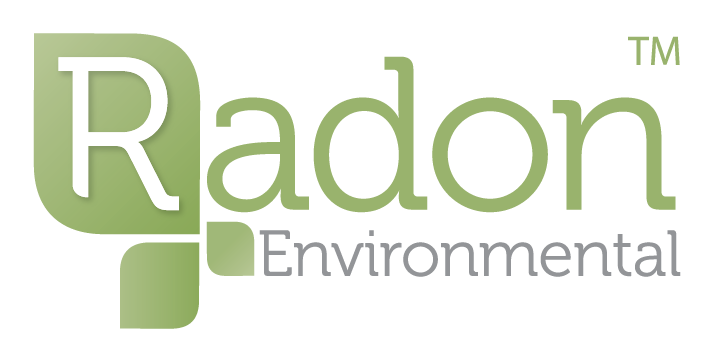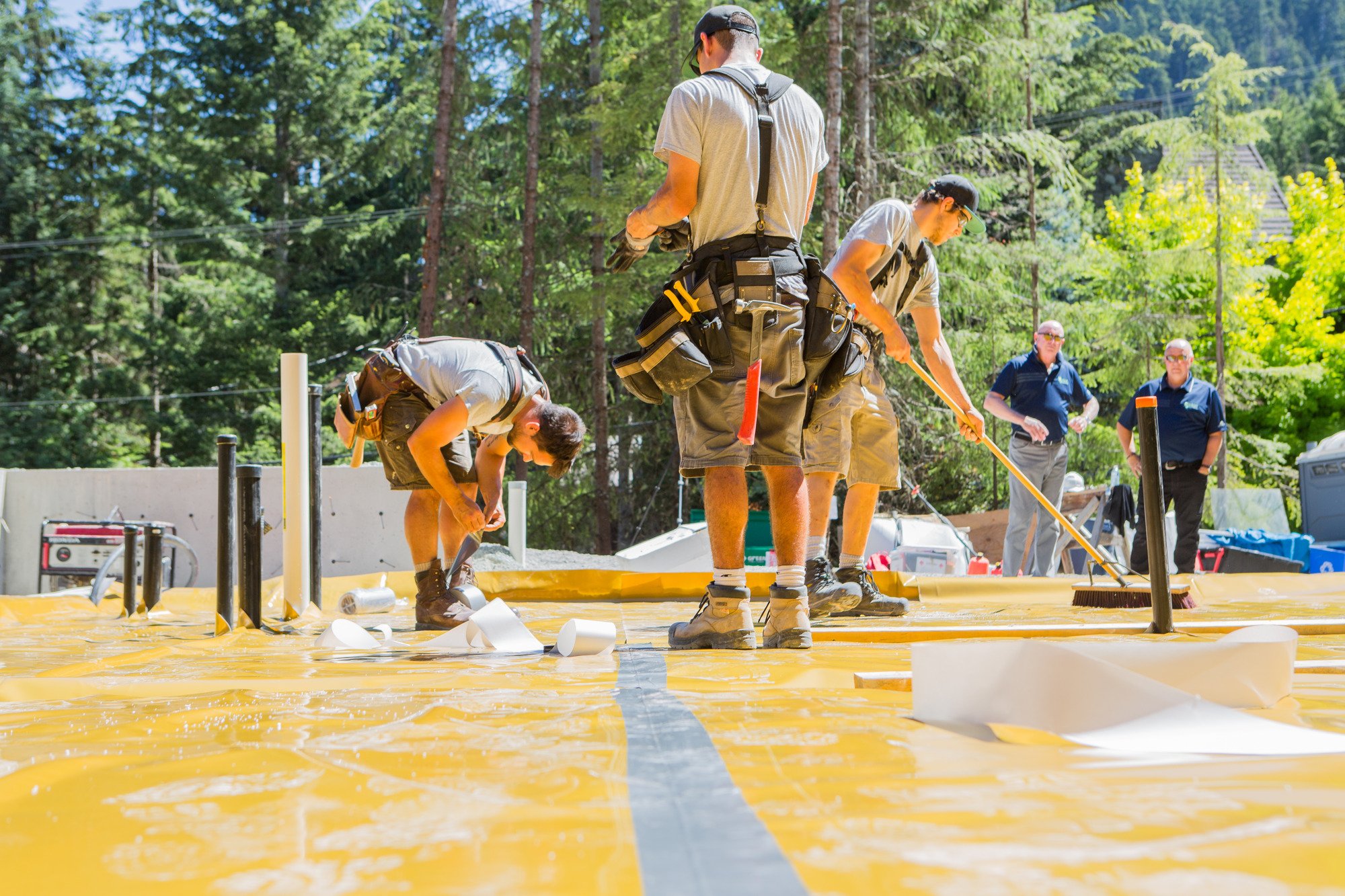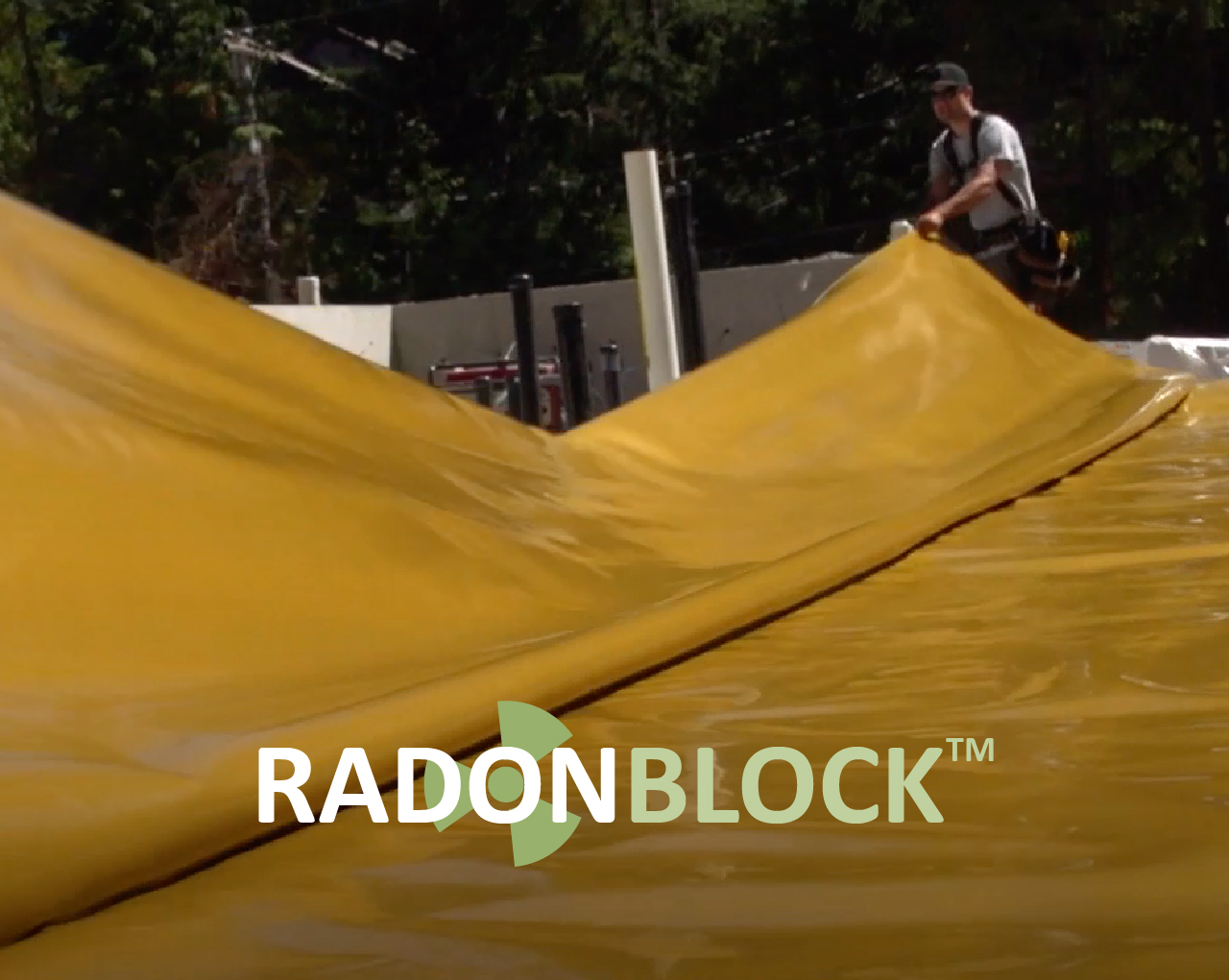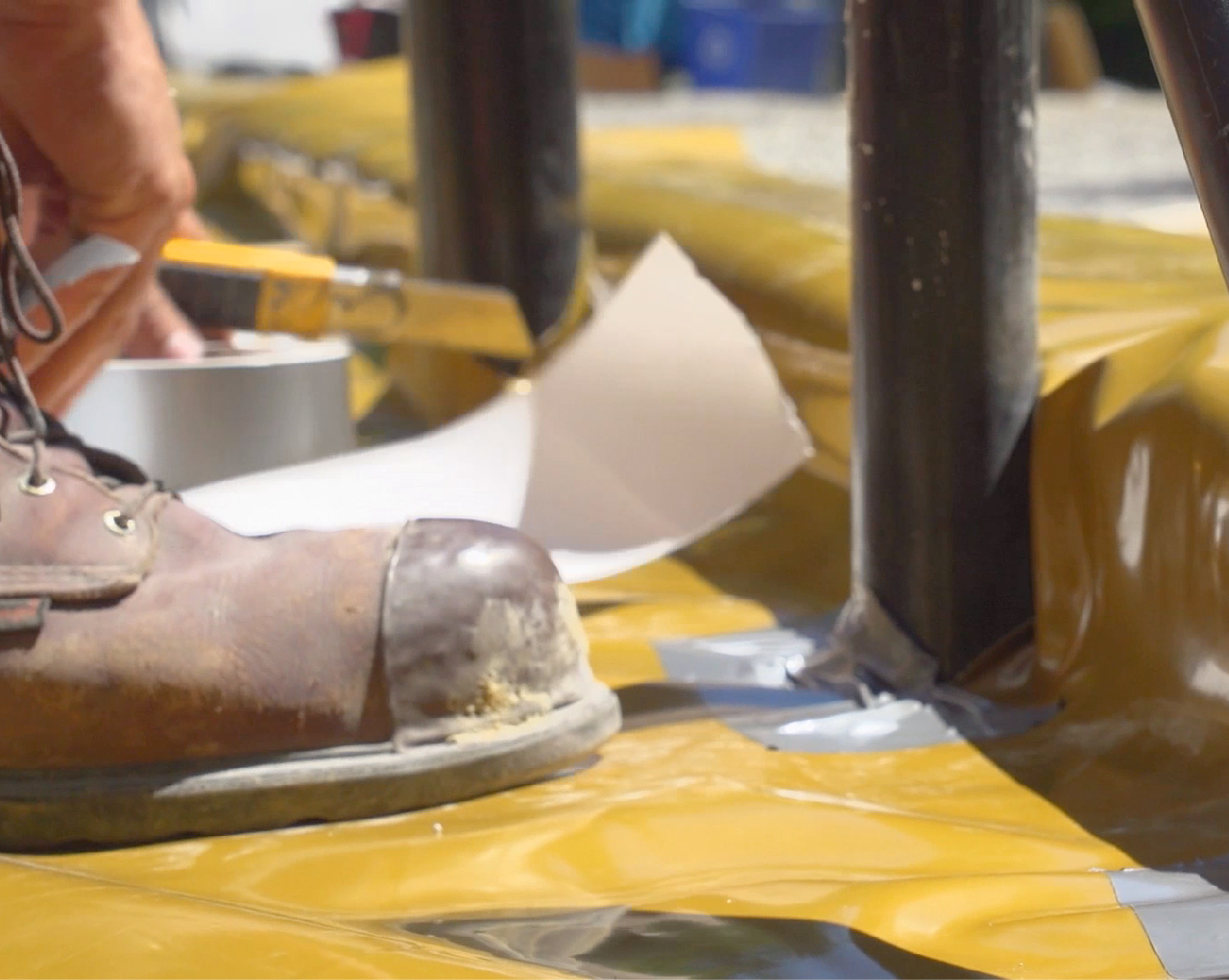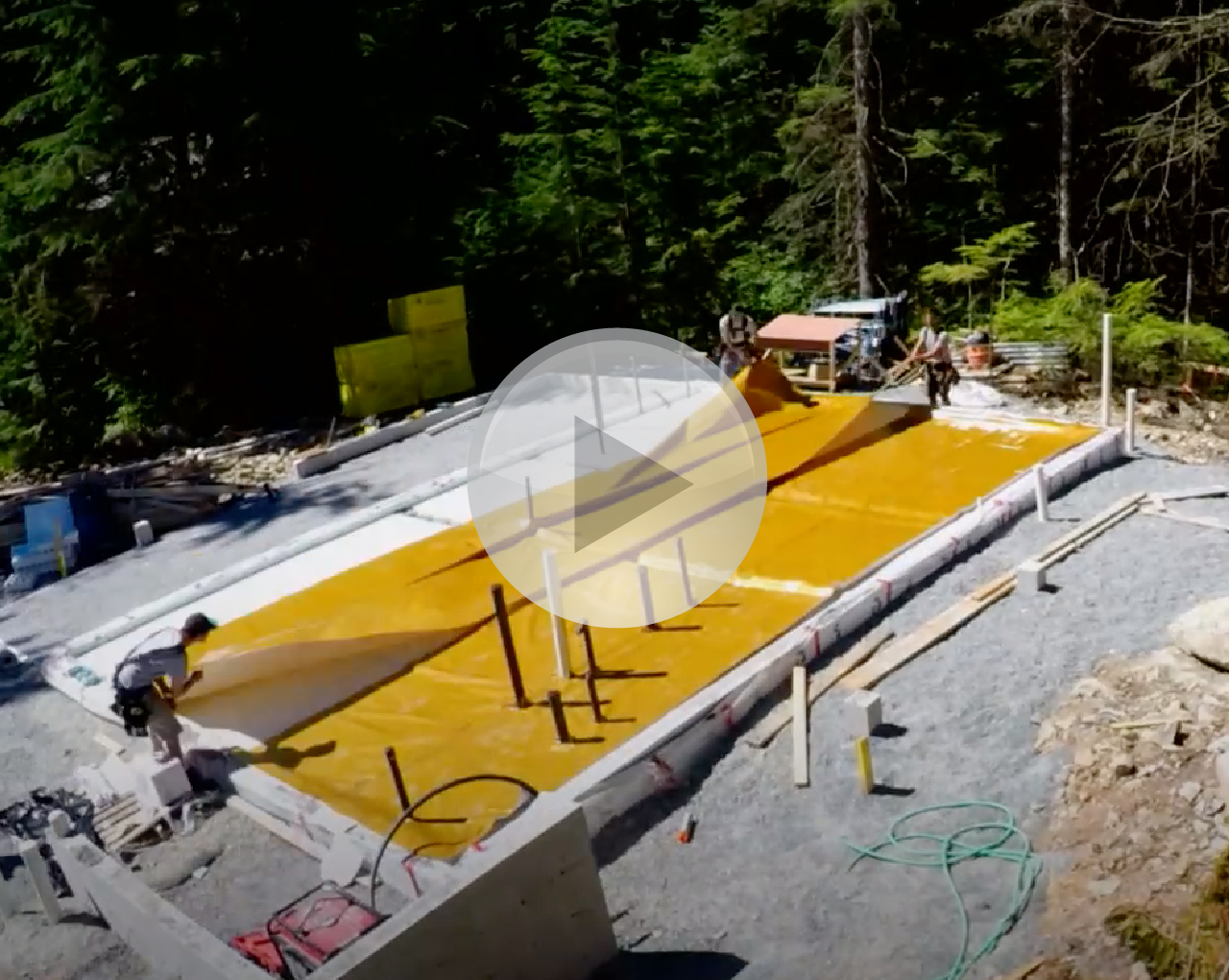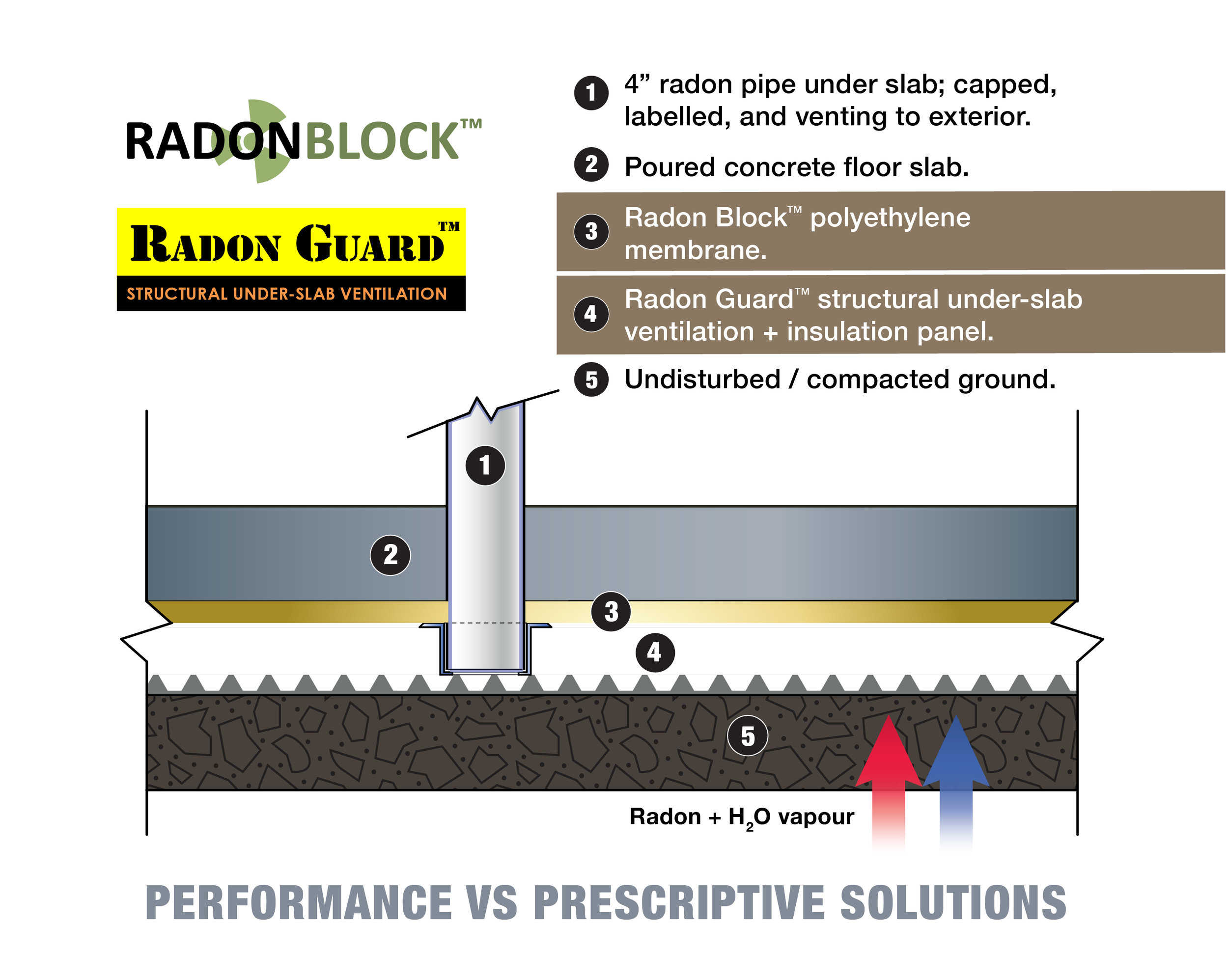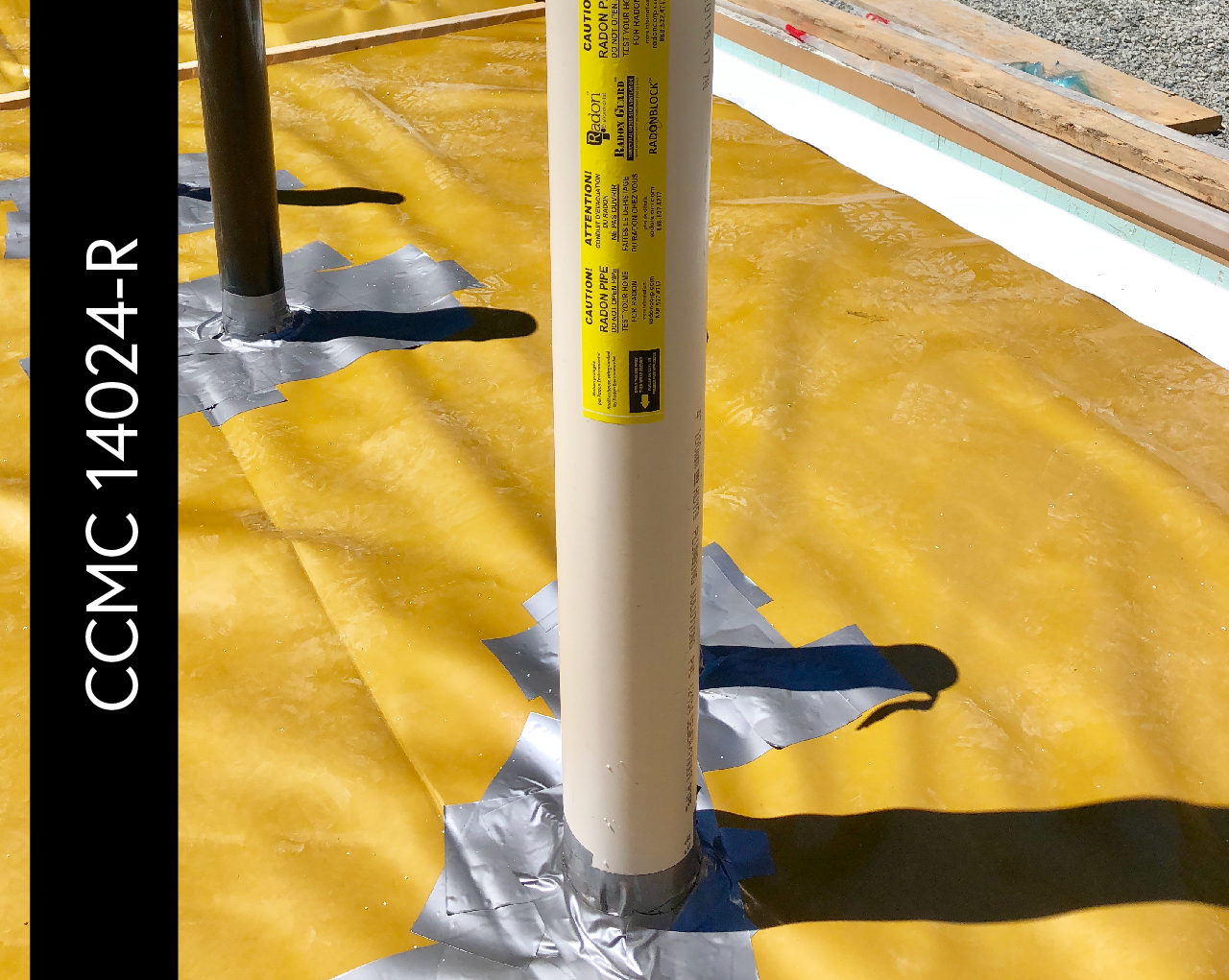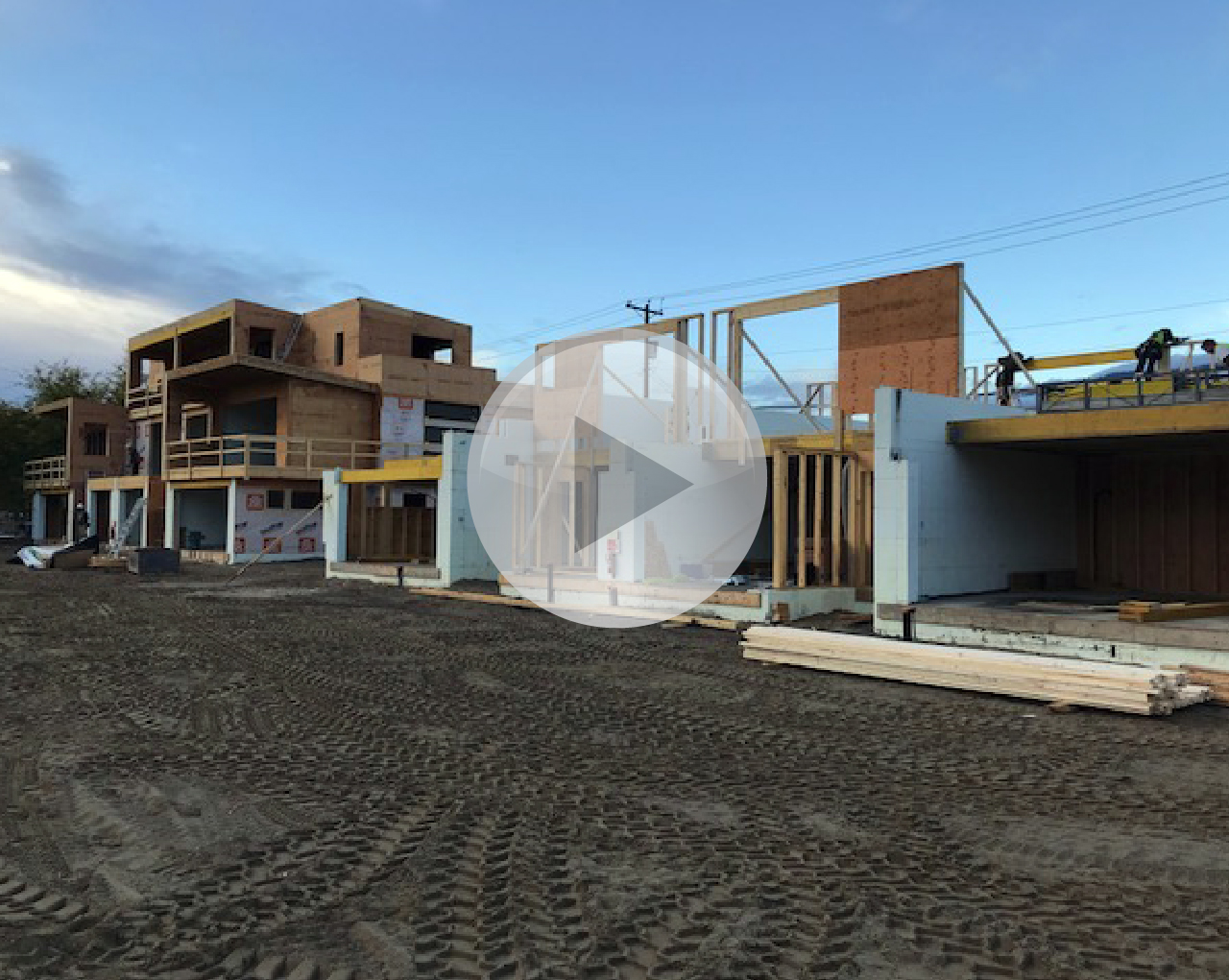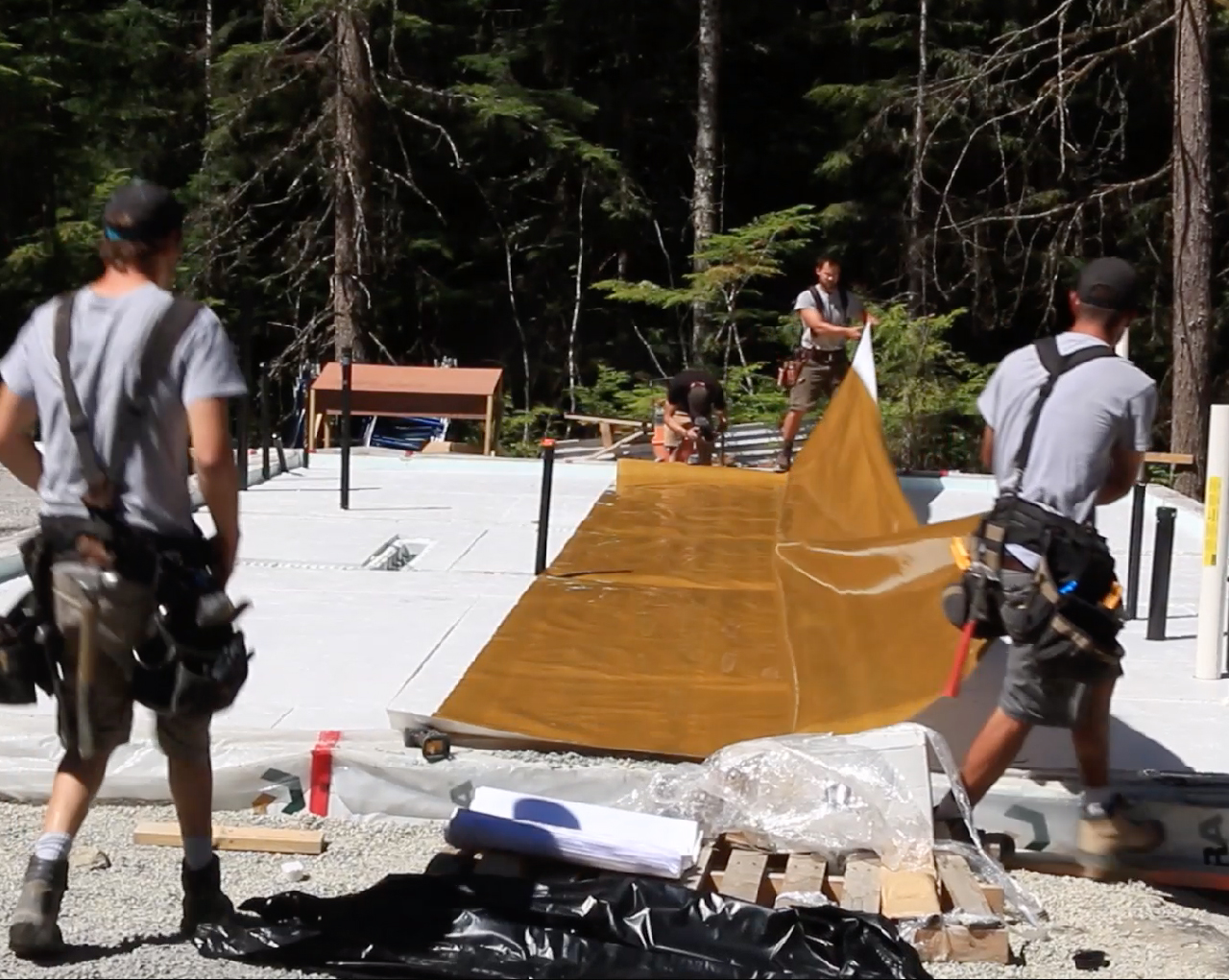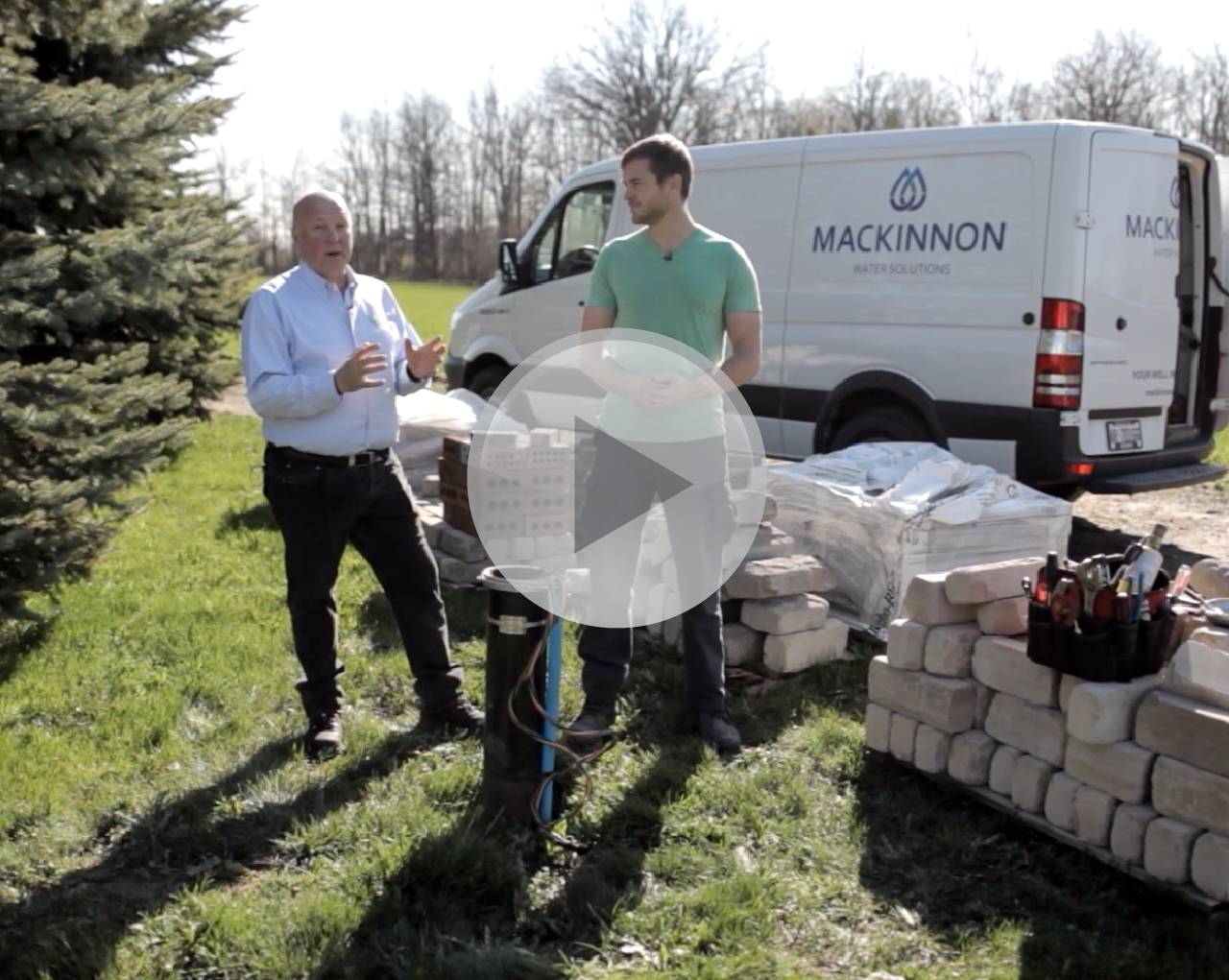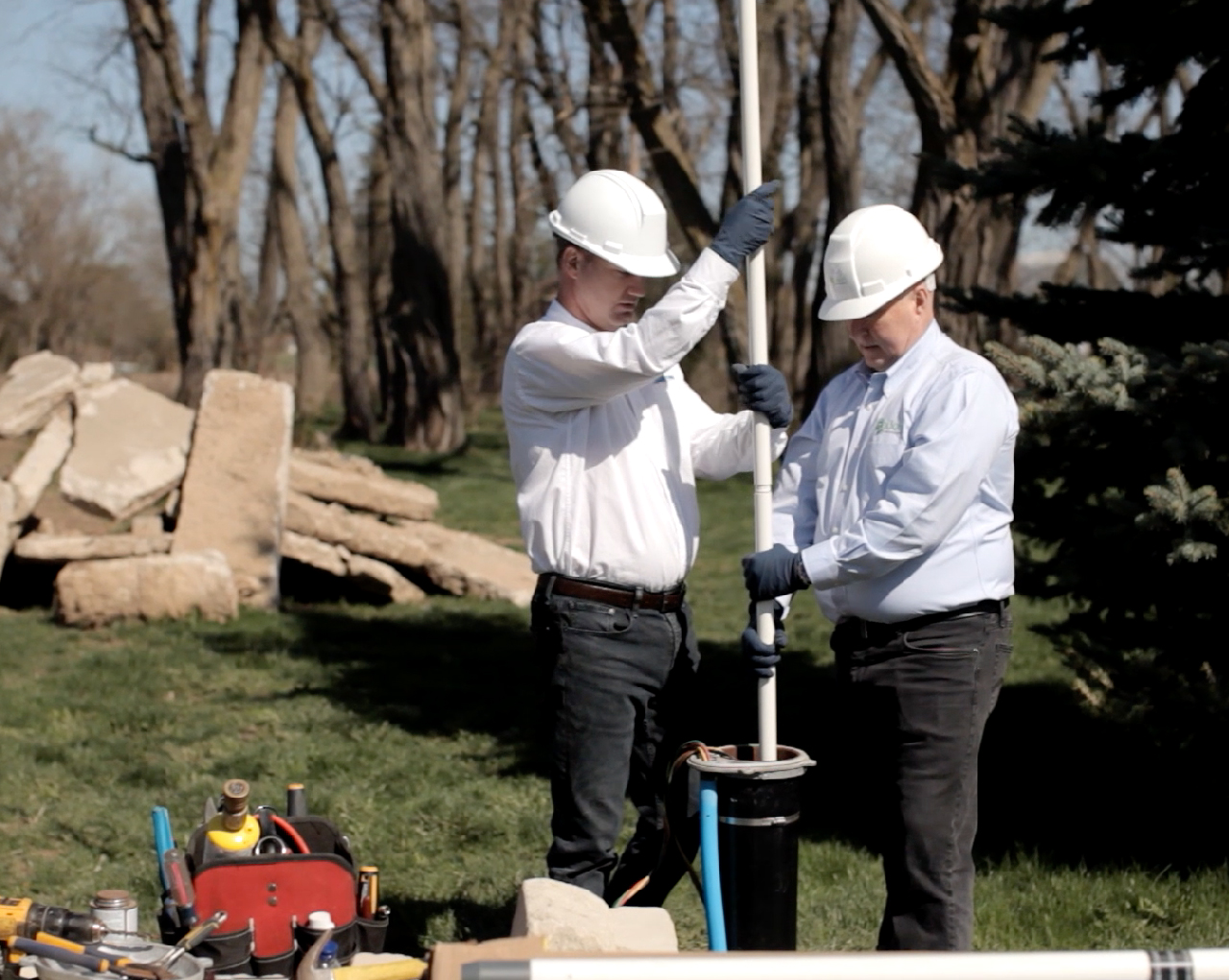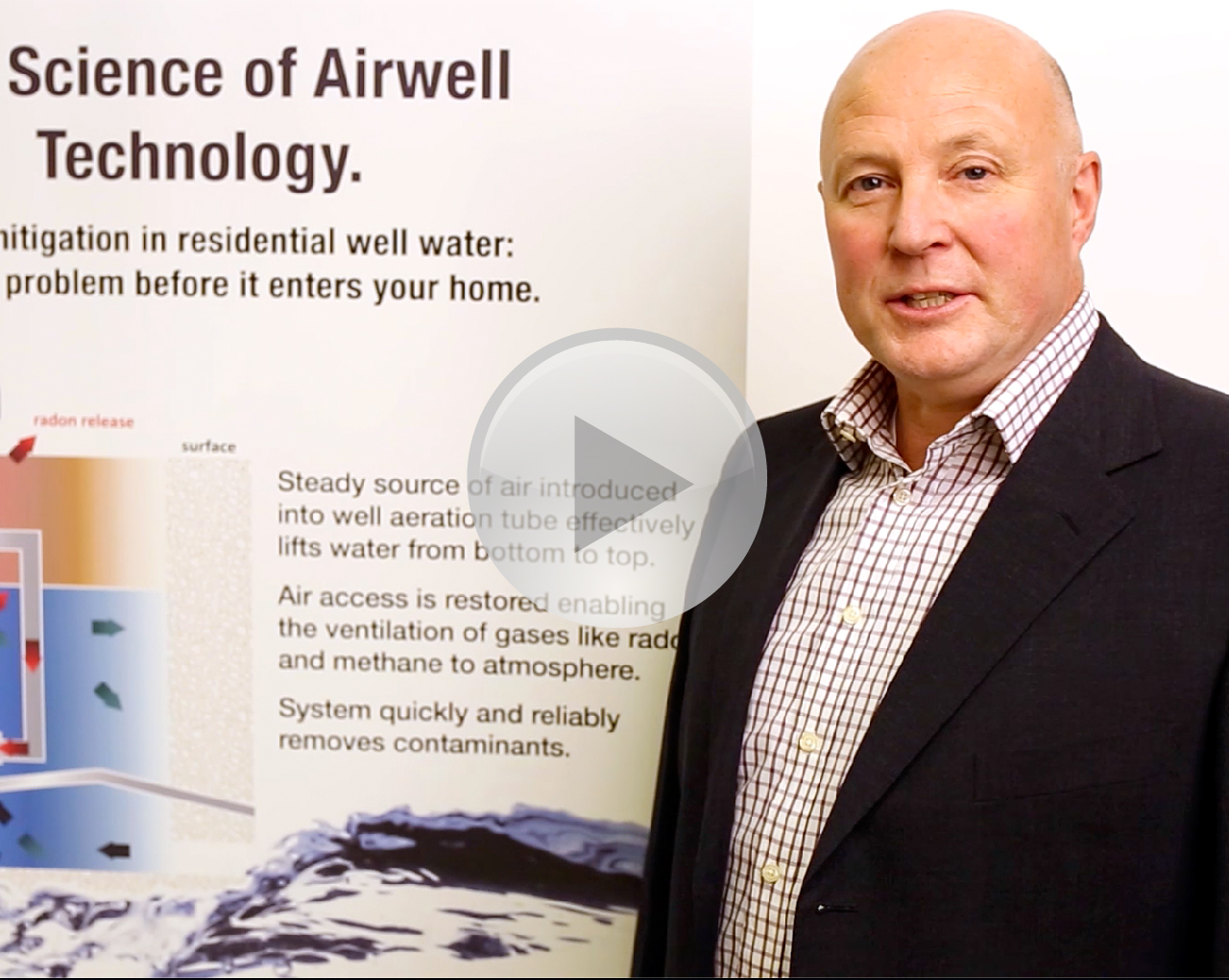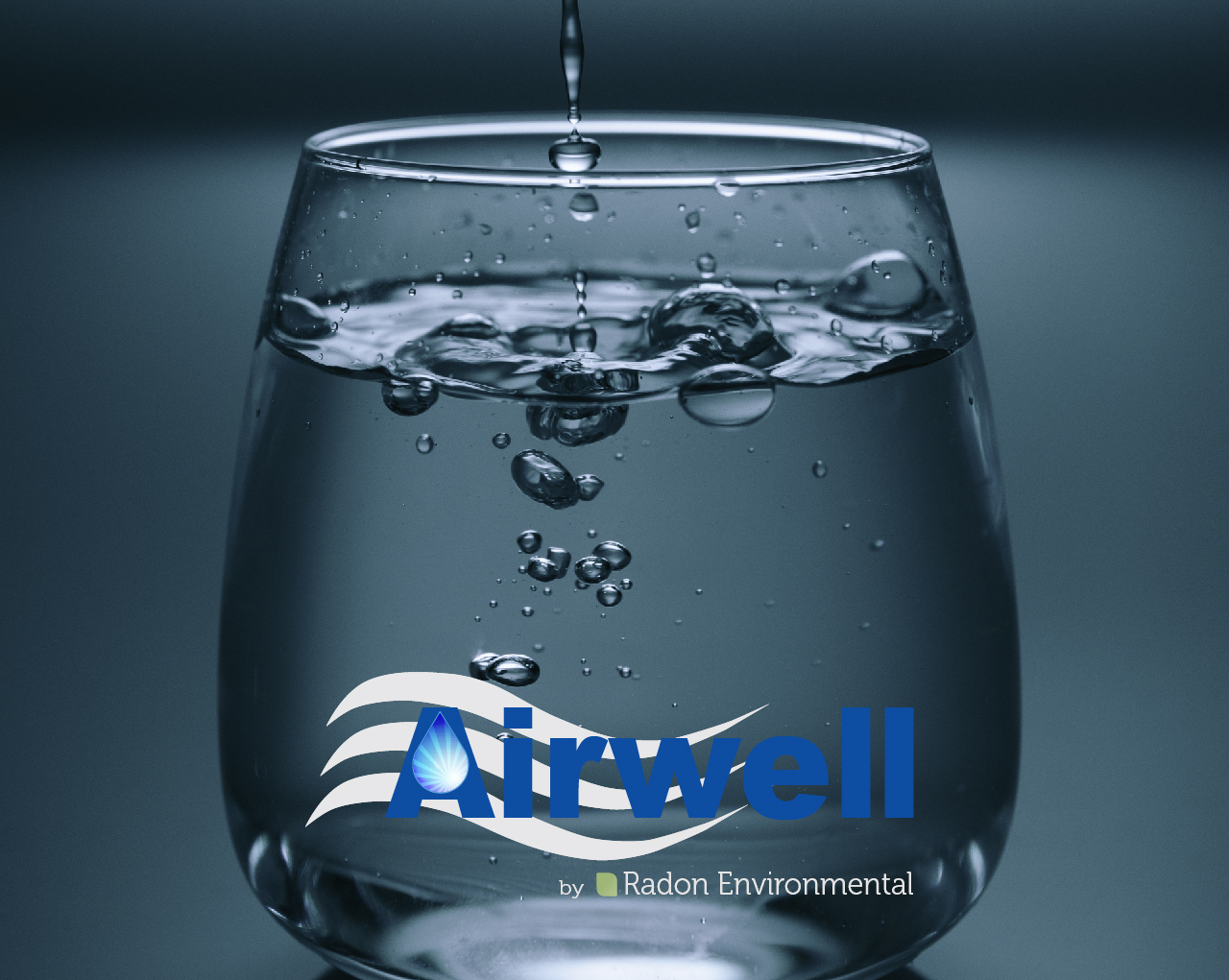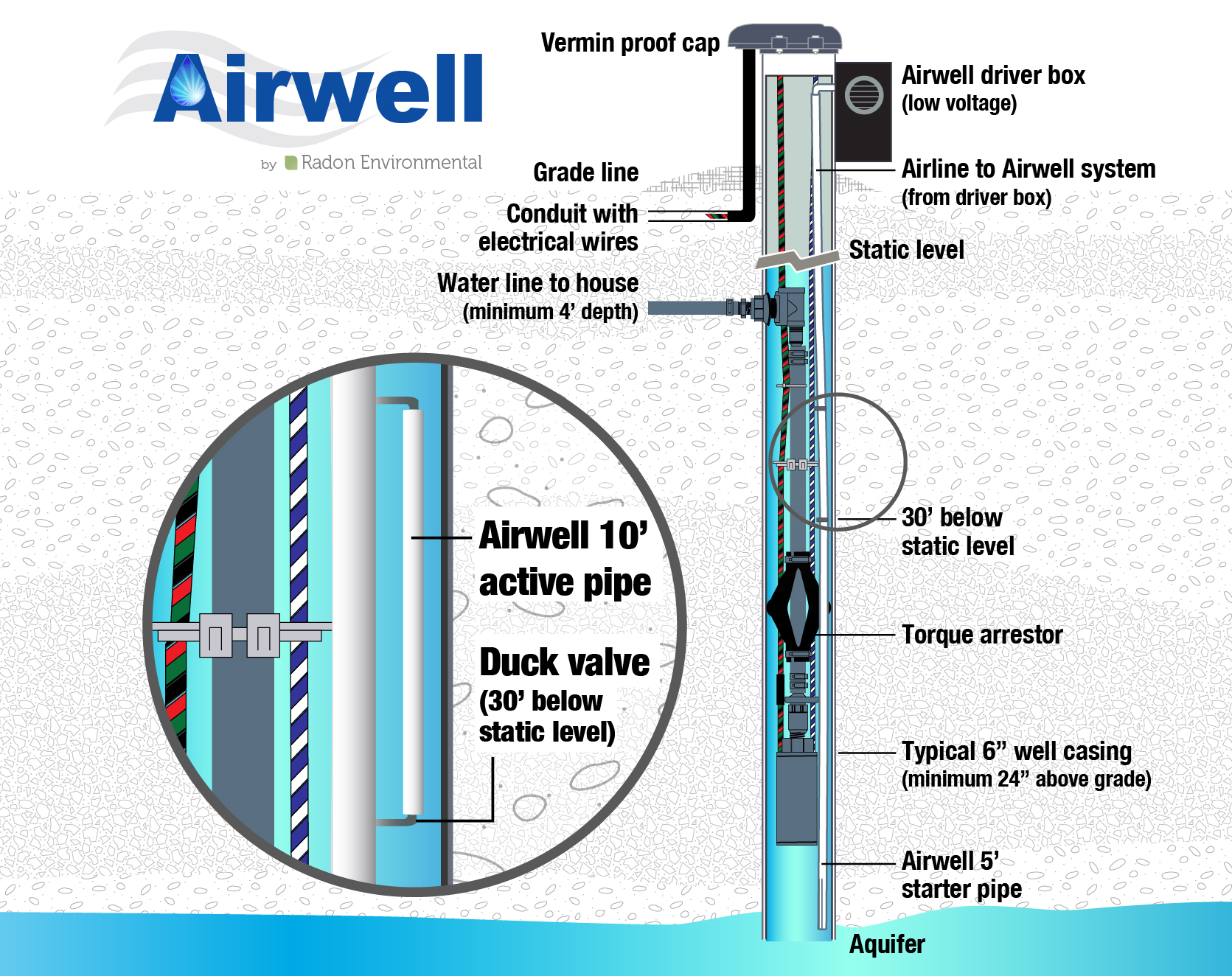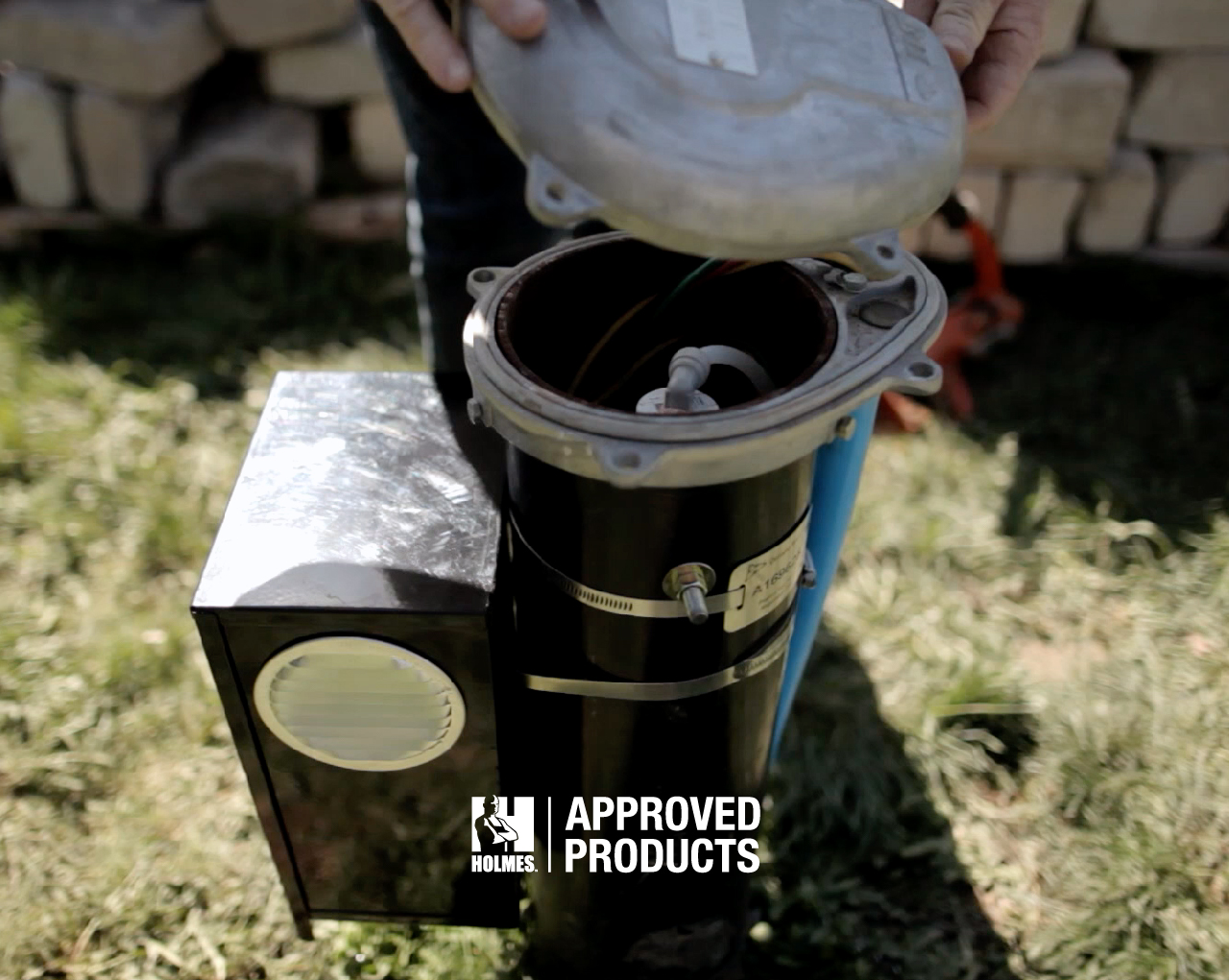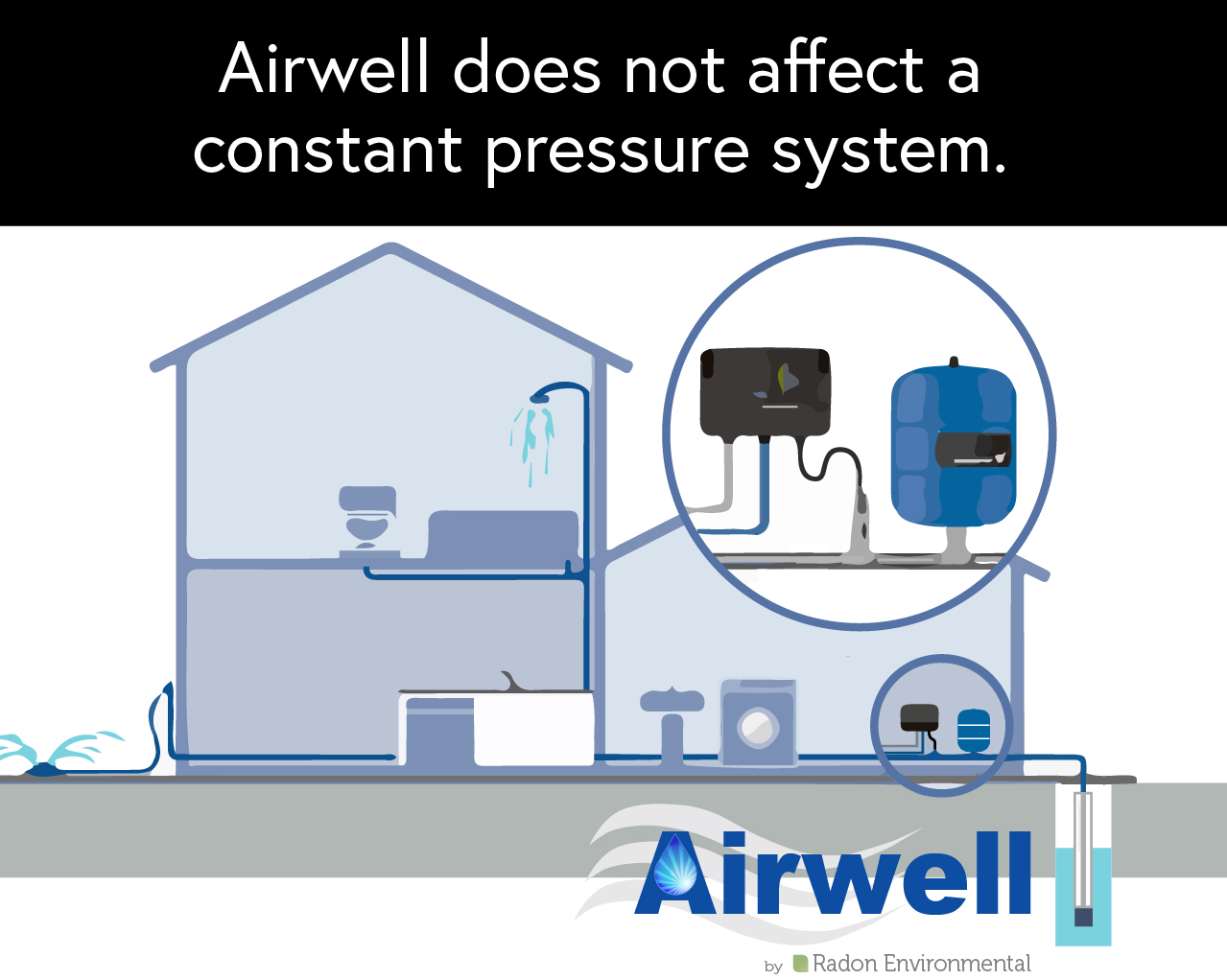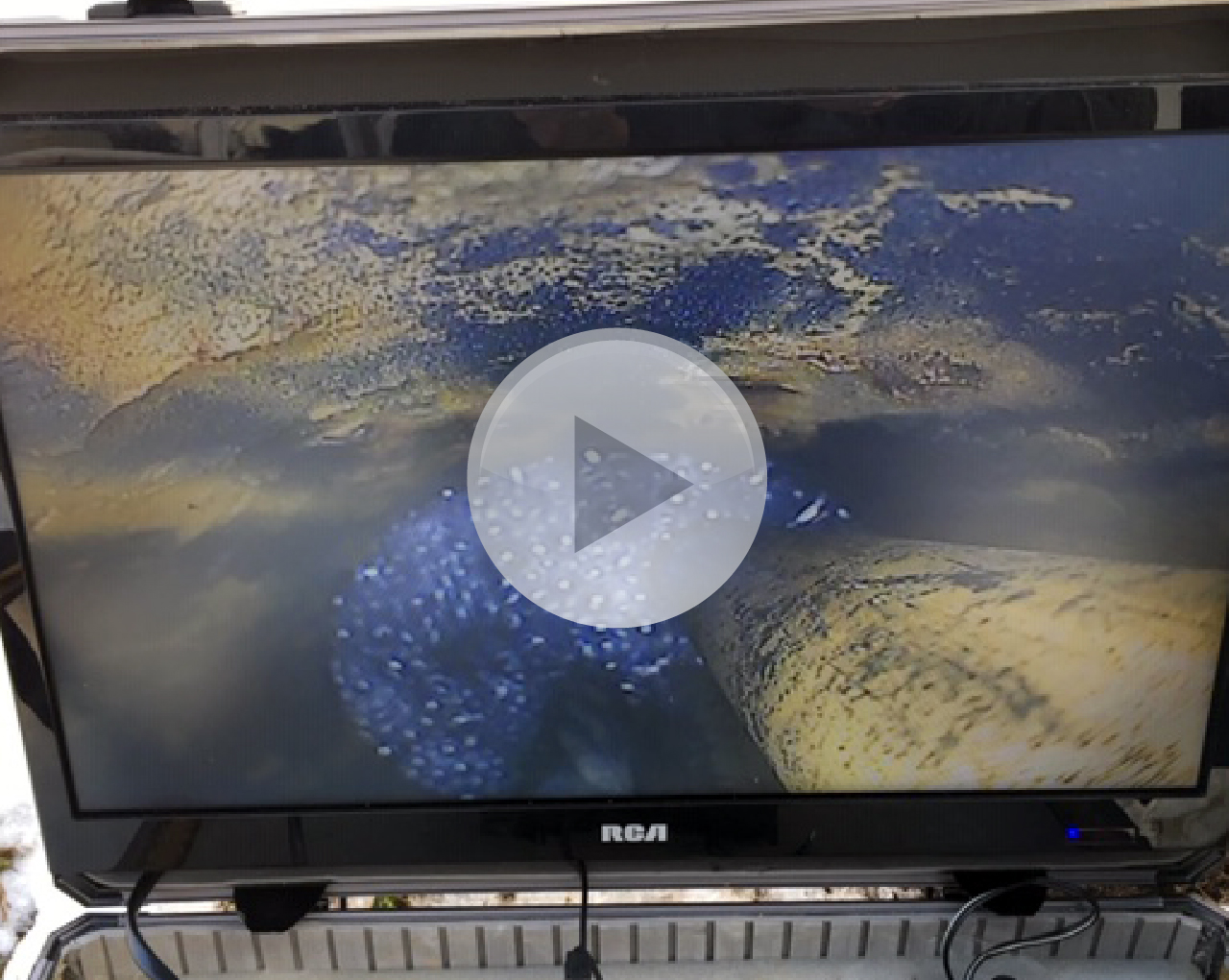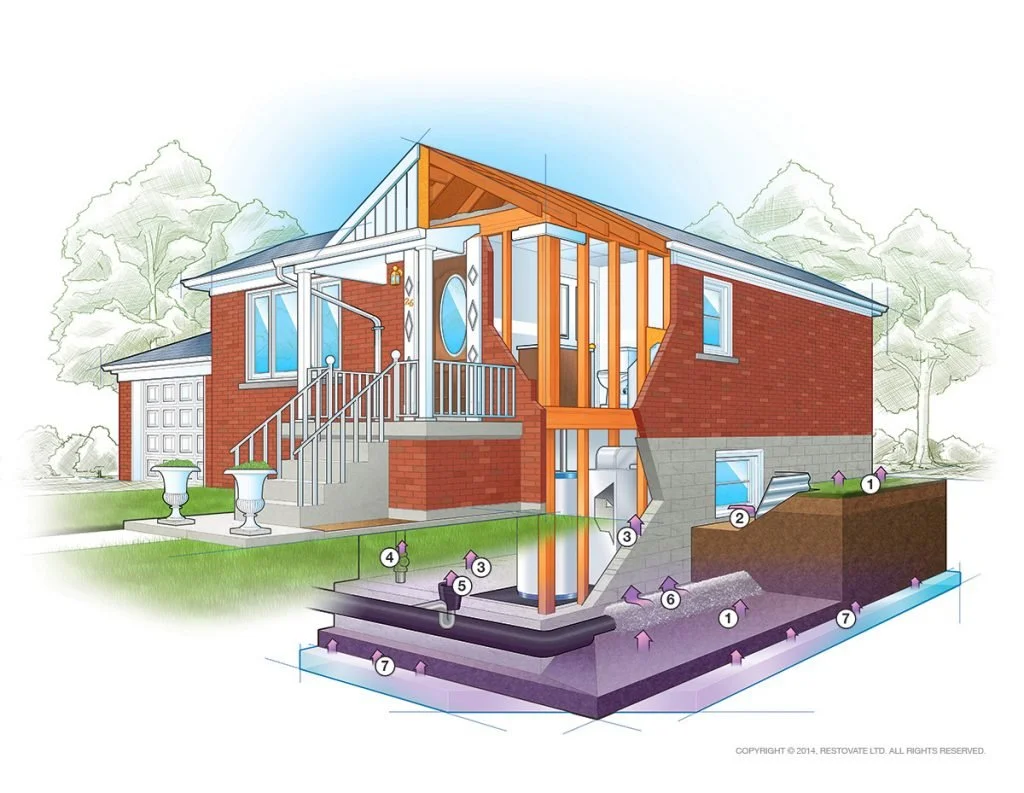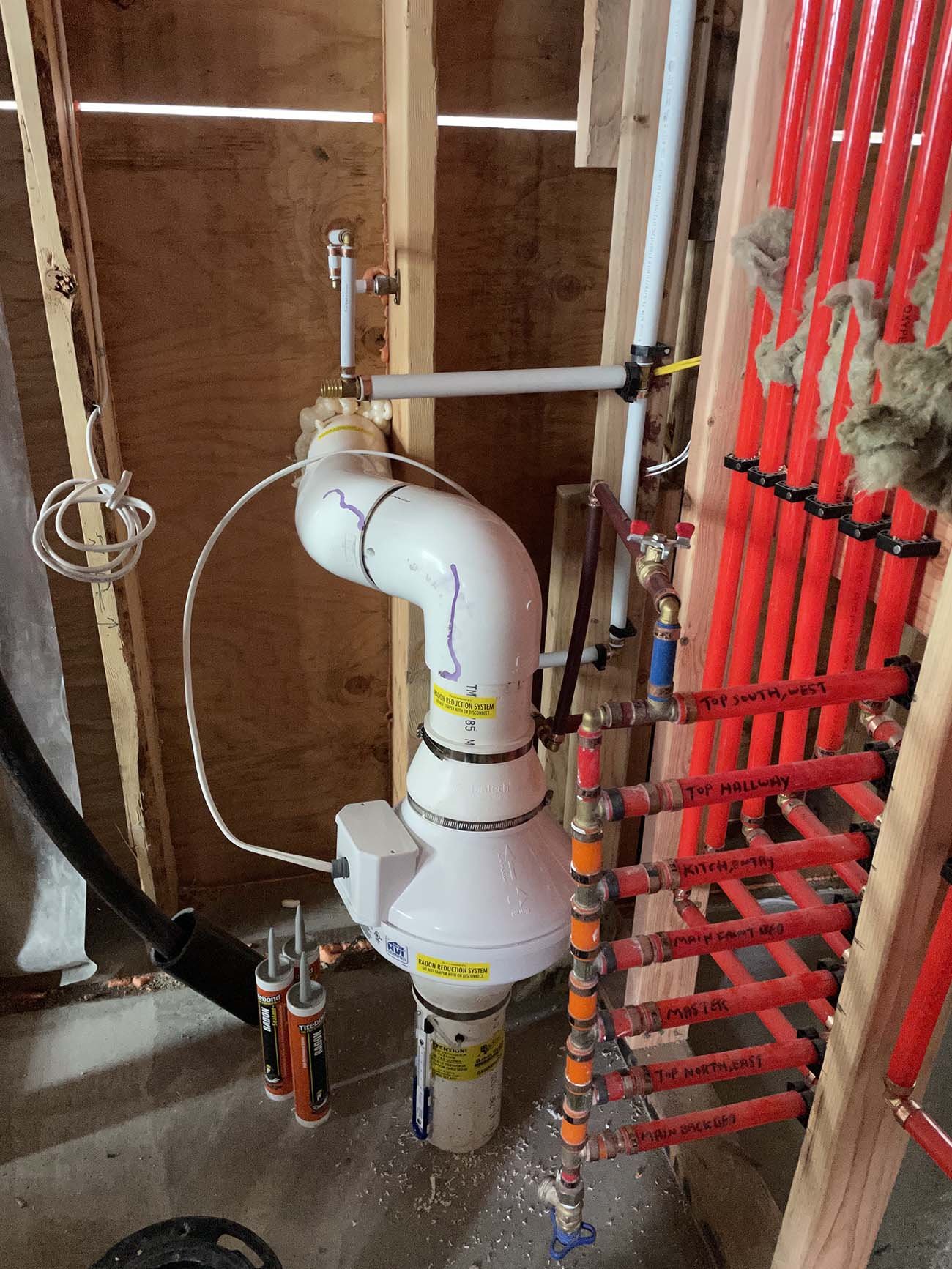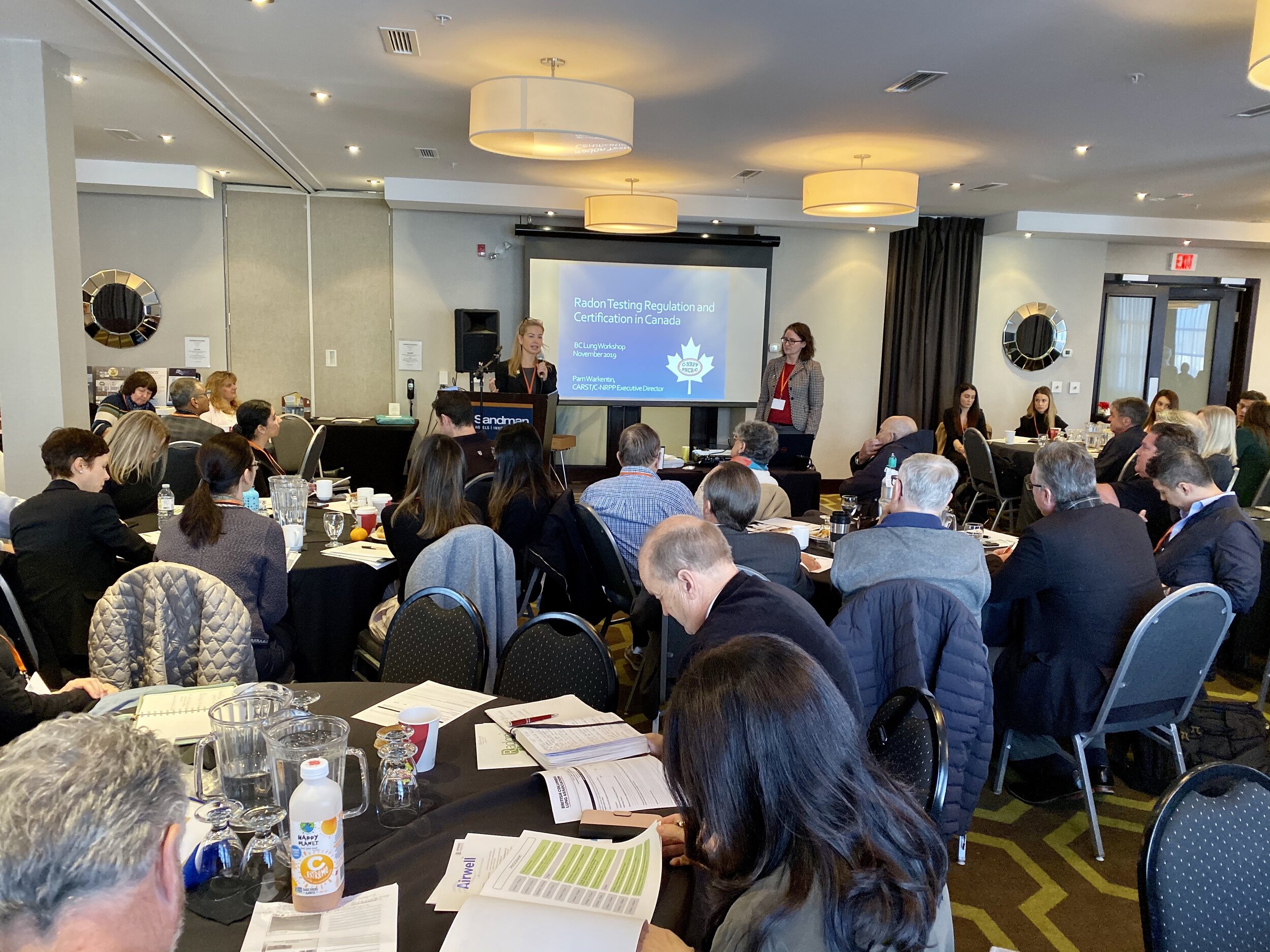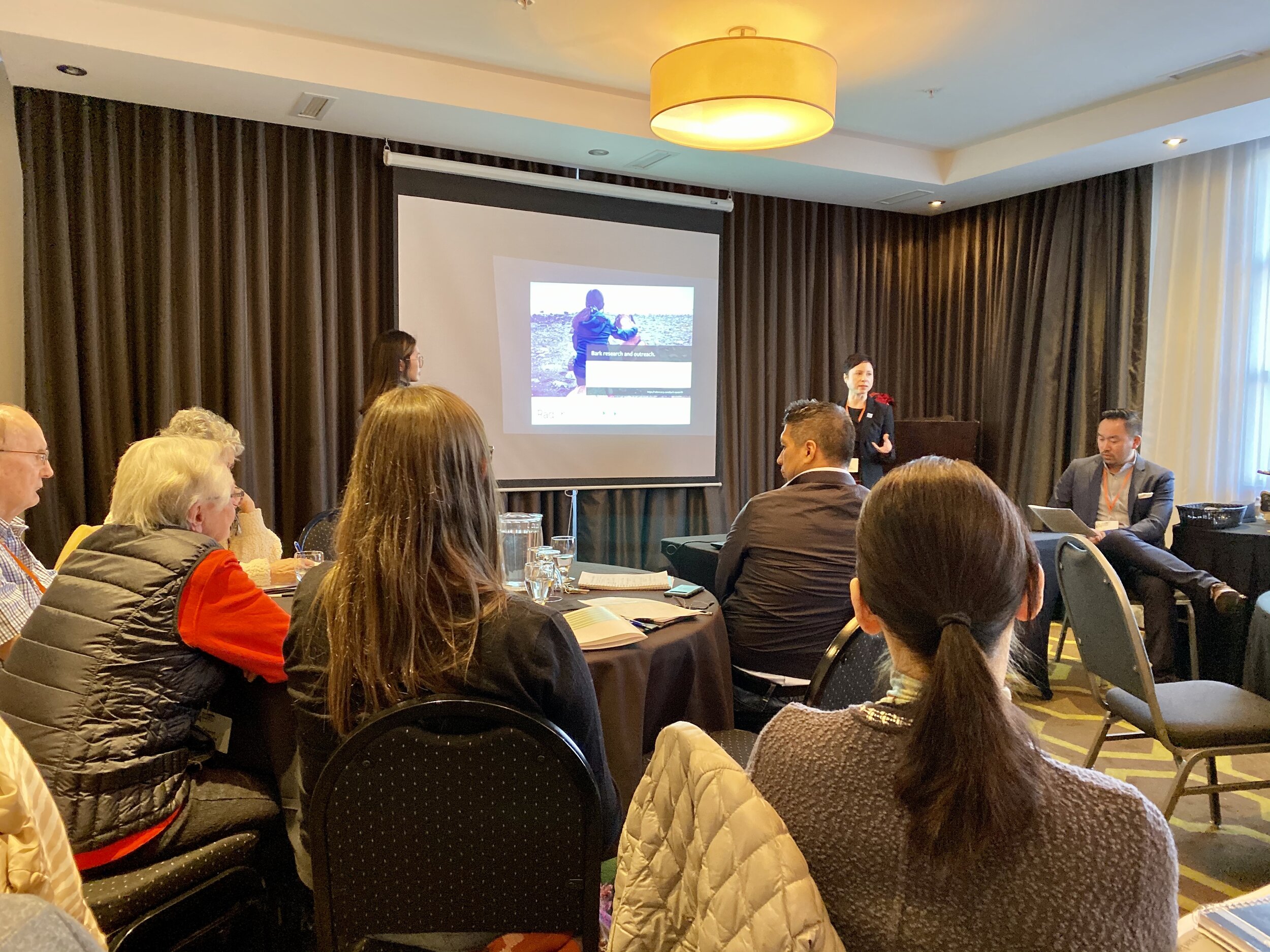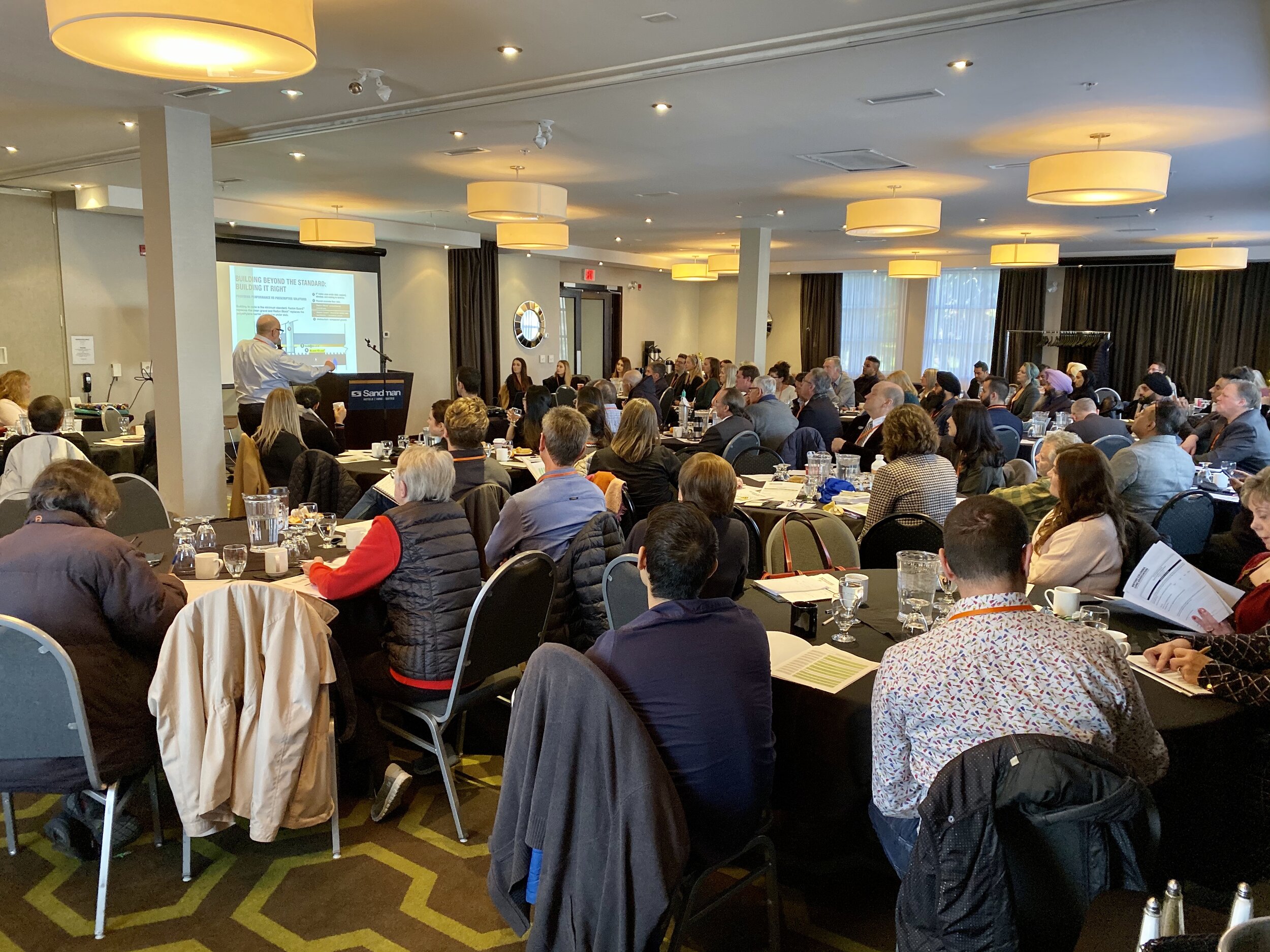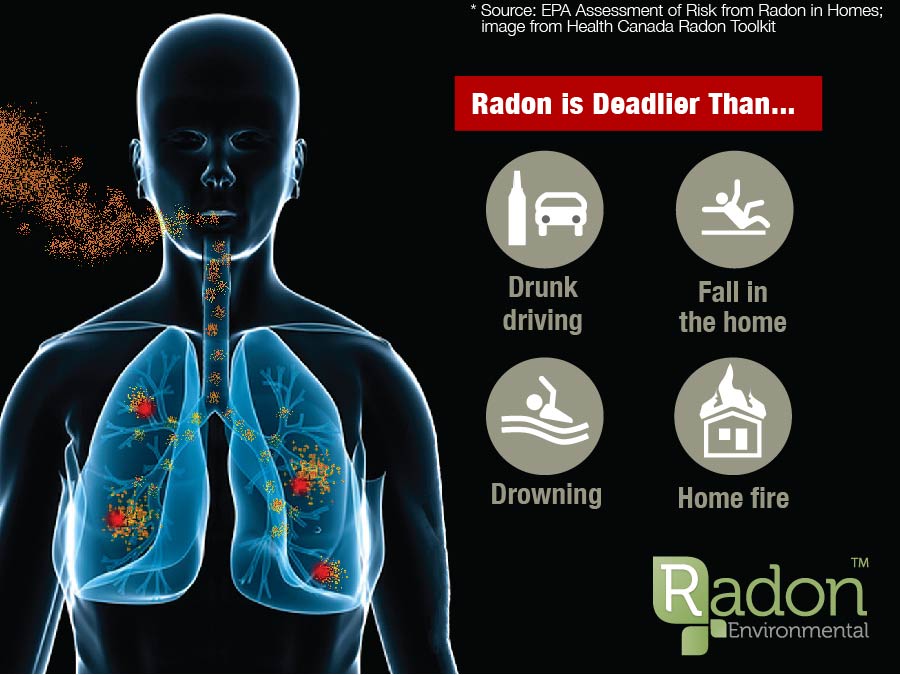RELATED: RADON MITIGATION: HAVE YOU CONSIDERED A RADON REDUCTION SYSTEM IN A NEW HOME?
Health Effects of Radon
Signs of Radon Poisoning
Radon is a silent killer. According to the Lung Association of Canada, radon is the second biggest cause of lung cancer in non-smokers. While radon decays, radioactive particles develop, which can become trapped in your lung tissue as you breathe. The energy released by radon particles can harm the cells in your lungs. Lung cancer can develop when the cells in your lungs become damaged.
You are at an even higher risk of lung cancer if you smoke and reside in a home with a high level of radon.
Common Symptoms:
How Long Does It Take for Radon Gas to Affect You?
Radon is a gas that enters the body as small particles. When these particles penetrate the lungs, alpha radiation is released, harming lung cells and leading to lung cancer. Unfortunately, radon poisoning has no treatment. The effects of the radiation are irreversible.
Lung cancer takes at least five years to develop when a particle destroys a cell and causes it to become malignant, but it commonly takes 15 to 25 years or even more. Only a few people who are exposed to radon develop lung cancer, but the more you are exposed to it, the more likely you are to develop lung cancer.
Where is Radon Most Commonly Found?
Radon exposure occurs in every building. The only way to know how much you have is to test for it. After entering buildings through cracks and other openings in the foundation, radon gas becomes trapped inside. Indoor radon can be regulated and managed using tried-and-true methods.
The highest levels of radon are typically found in the basement or first floor, and levels can vary from house to house, even homes side-by-side!
Radon Inspection by Professionals
A radon test determines the amount of radon present in your home. There are two types of testing: a do-it-yourself radon test kit or a test performed by a C-NRPP professional house inspector or radon specialist.
Mike Holmes Inspections inspectors are fully trained professionals certified by the Canadian National Radon Proficiency Program (Canadian-NRPP). C-NRPP professional house inspectors or radon specialists are specially trained to provide you with expertise and knowledge to help homeowners and building owners measure and reduce their radon levels.
How to Reduce Radon in Indoor Settings?
To minimize radon, most people utilize a system that includes a vent pipe(s) and a fan(s). These "sub-slab depressurization" solutions don't necessitate any considerable housing modifications. Crawl space dwellings can also benefit from similar solutions. These systems keep radon gas from the house by trapping it beneath the concrete floor and outside the foundation. Radon mitigation contractors use other radon reduction methods that may work in your house. The best system is determined by your home's design and other considerations.
RELATED: MITIGATE RADON: HOW TO MITIGATE RADON IN YOUR HOME IN 100 DAYS OR LESS.
As you can see, there are numerous factors to consider as well as a variety of radon mitigation system solutions, some of which work in tandem with one or more methods. Find a certified mitigator by contacting the Canadian National Radon Proficiency Program (C-NRPP) at 1-855-722-6777 or info@c-nrpp.ca, or the Canadian Association of Radon Scientists and Technologists (CARST) at info@carst.ca, or Health Canada at hc.radon.sc.canada.ca. Protect yourself and your family by having your home tested and installing a radon mitigation system to reduce the dangers of radon gas.
Q & A SECTION:
Can you run a ceiling fan during a radon test?
No. During the test, turn off any air-moving equipment. Ceiling fans, dehumidifiers, conventional fans, HEPA filters, and any other air-moving filtering equipment fall into this category. During the test, only use fireplaces or heating stoves if they are your primary source of heat.
Do dehumidifiers remove radon?
No, buying a dehumidifier will not make radon go away.
Does rain affect radon testing?
In short, yes, radon concentrations are predicted to be slightly higher within your home on rainy days. The weather is one of the most important factors in radon levels. Weather changes, especially severe weather, can modify pressure differences and, as a result, the way radon enters your home. Radon levels in a home typically rise after specific weather events, such as storms. Strong winds, for example, can cause radon levels to rise or fall. Depending on the situation, weather events can cause your radon levels to rise or decline. Weather has a number of effects on your test, and it's impossible to forecast which ones.
Do open windows affect radon testing?
It's vital to remember that while testing for radon, the house must be completely closed up – that’s why is it best to test in the fall and winter months. The test will be invalid if any outside doors or windows are open.
Does opening doors reduce radon?
Opening windows to minimise radon levels isn't a viable long-term strategy. Open windows, can minimise radon in the short term, allowing you to stay in your home safely until you can build a permanent solution.
Can air purifiers reduce radon?
Air cleaners or purifiers are machines that filter or electrostatically remove particulates from the air, such as dust or radon decay products. Air cleaners are routinely used to condition indoor air for several health benefits and overall comfort in the home, and attempts have been made to market air cleaners to prevent radon decay. Mold, dust, allergies, germs and viruses, and odours are all things that air purifiers can help with, but there are manufacturers that claim they may also aid with poisons, gases, and compounds like radon. An activated carbon filter is the most effective form of air filter and, according to some research, can help in reducing radon levels. However, this technology has not been proven to help decrease the health concerns associated with radon. The EPA does not recommend using air cleaners to reduce radon decay products in indoor air at this time. Although air cleaners will remove some radon decay products, numerous issues remain about the relative health effects of the decay products that aren't removed and the possible impacts of the radon decay products' undiminished source. The EPA feels there is insufficient evidence to recommend the installation of air cleaners to lower the risk of exposure to radon and its decay products until additional data is available.
Are portable radon detectors accurate?
There are definitely several reliable portable radon detectors. If fact, Ecosense EcoCube and Radon Eye are in the top 10 Radon Detection Devices by Best Review Guide for 2022.
Can radon cause mental illness?
For many people, radon does not directly cause psychological disorders. However, the potential of radon in your home can cause anxiety and restless thoughts about the prospective health risks of living in a home with a high radon level. New research is being conducted every day, and there are university studies looking into linking Radon exposure to early on-set Alzheimer’s.
Do Ceiling fans reduce radon?
Ceiling fans do not reduce radon. In fact, if the blades on the fan are pulling air upwards it could actually increase the radon levels very slightly.
Does every house have radon?
Every home has some radon, although concentration levels differ from one home to the next, even if they are near to each other. The only way to know how much is to test for Radon.
